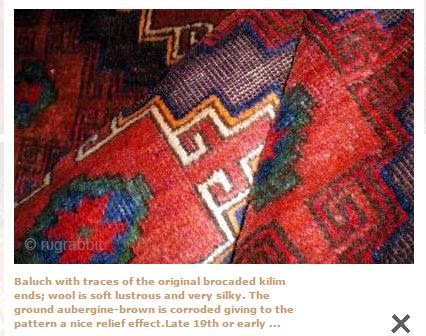 |
| Michael Buddeberg, Alberto Boralevi, Wendel Swan, Dennis Dodds, Peter Bichler, Anette Granlund |
Here we see Wendel with his beautiful and charming wife Diane. The young fellow on the right is Robert Torchia had been a Curator at Lightner Museum, St. Augustine, Florida who wrote some important work on Oriental Rugs.
This piece was a very memorable part of the Swan collection. In part because of its beauty and rarity and partially because it sold for multiples of its high estimate at auction.
Another typical piece from the Swan collection is this bag, Typical in that many authorities consider it best of type. Wendel has great discernment and an eye for color.
 |
| Alberto Boralevi, Wendel Swan and Bruce Baganz |
 |
| Robert Pinner and Wendel Swan |
It as a sad day indeed when I received this message from Wendel:
Dear Friends, With a sense of deep personal loss, I must report that Robert Pinner passed away peacefully at his home in Twickenham last night. As the founder of ICOC, the co-founder of Hali and as a tireless energy behind both until just recently, his influence on the world of carpets and textiles has been enormous. Those of us who worked with him became infected by his enthusiasm and benefited from his generosity. We also endured, from time to time, the wrath of his extraordinarily keen mind. That was his nature. That is why we loved him. We have lost a dear friend. Wendel Swan
One strong defender of Wendel Swan was his friend Harold Keshishian. I remember one time a mutual friend was unkind in a comment about Wendel and Harold firmly put him in his place. I also remember how concerned he was at one point about Wendel's health despite the fact that HK was himself dying.
If someone wanted to meet Wendel San there is no better place then to come to
Wendel R. Swan (USA) Chair, Executive Committee
All of this is my idea and done without Wendel's knowledge or permission. If he finds fault I will correct or delete. Some pictures I had and some borrowed from R. John Howe














.jpg)